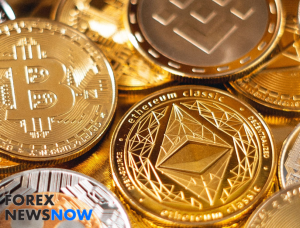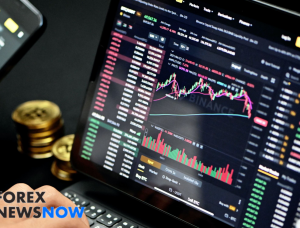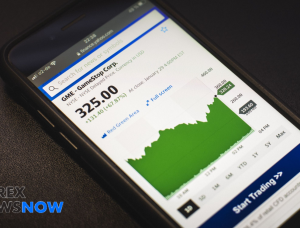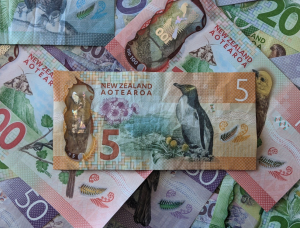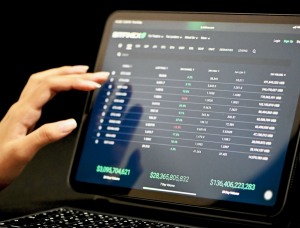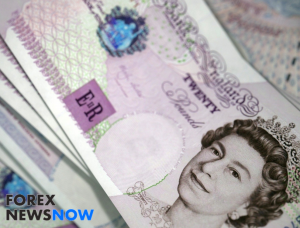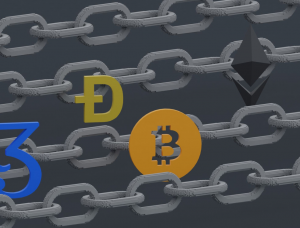
The emergence of blockchain technology and cryptocurrency has disrupted traditional financial markets, with new opportunities for investment and asset ownership. One such opportunity is the tokenized assets market, which allows investors to purchase fractional ownership of assets, such as real estate or art, through digital tokens. This market is gaining traction as it offers several advantages over traditional asset ownership, including increased liquidity and transparency.
Additionally, tokenization reduces the barriers to entry for investors, making it possible for a wider range of individuals to participate in asset ownership. However, the tokenized assets market is not without its challenges, including regulatory uncertainty and technological limitations. In this article, we will explore the tokenized assets market in detail, looking at its growth potential, benefits, and challenges.
What You Should Know About Tokenized Assets Market
The tokenized assets market has gained significant traction in recent years, representing a major shift in the way assets are owned, traded, and managed. Tokenization is the process of digitizing traditional assets, such as real estate, art, and commodities, by issuing digital tokens that represent ownership rights. These tokens are then traded on blockchain-based platforms, allowing for seamless and transparent transactions.
One of the key features of the tokenized assets market is the democratization of ownership. Previously, ownership of traditional assets was limited to a select few, but with tokenization, anyone can invest in a fraction of an asset, making it accessible to a wider range of investors. Additionally, tokenization offers greater liquidity and transparency.
There are several trends in the tokenized assets market that are worth noting. Firstly, there has been a growing interest in fractional ownership of high-value assets, such as real estate and art. This has been driven by the desire for greater diversification and access to alternative investments. Secondly, there has been a rise in the use of security tokens, which are tokens that represent ownership in a company and comply with securities laws. Security tokens are seen as a more regulated and transparent alternative to initial coin offerings (ICOs).
However, there are also challenges in the tokenized assets market. One of the main challenges is the lack of regulatory clarity, as the legal status of tokenized assets is still uncertain in many jurisdictions. This has led to uncertainty and confusion among investors and issuers alike. Additionally, there are concerns around security and custody, as digital tokens are vulnerable to hacking and theft.
Despite these challenges, the tokenized assets market holds significant possibilities for various industries. For example, the real estate industry can benefit from tokenization by making it easier to invest in real estate assets and providing greater liquidity. Similarly, the art industry can use tokenization to enable fractional ownership of high-value artwork, making it more accessible to a wider range of investors.
One notable example of the use of tokenized assets is the STO (security token offering) launched by Blockchain Capital in 2019. The STO raised $10 million and was the first security token offering to comply with securities laws. Another example is the tokenization of a luxury student housing development in South Carolina by Convexity Properties, allowing for fractional ownership and greater liquidity for investors.
In conclusion, the tokenized assets market represents a significant shift in the way traditional assets are owned, traded, and managed. While there are challenges, such as regulatory uncertainty and security concerns, the market holds significant possibilities for various industries.
Forecasts for 2023 and Opportunities for Tokenized Assets
The tokenized assets market is gaining momentum as a viable alternative to traditional financial markets. According to a recent report by Citigroup’s research arm, the market for tokenized assets could reach a staggering $4-5 trillion by 2030. This prediction is based on the belief that the next billion users of blockchain technology will be attracted by tokenization.
Citi’s forecast predicts that $1.9 trillion will come from debt, $1.5 trillion from real estate, $0.7 trillion from private equity and venture capital, and between $0.5-1 trillion from securities. Private equity markets are expected to be the highest rate of adoption, given the liquidity, transparency, and fractionalization benefit that tokenization provides. Citi analysts predict that private equity and venture capital funds will eventually become the most tokenized sector, taking up about 10% of the entire market, with real estate coming in second with a share of 7.5%.
Several private equity firms, such as KKR, Apollo, and Hamilton Lane, have already created tokenized versions of their funds on various blockchain platforms such as Securitize, Provenance Blockchain, and ADDX.
Tokenization provides investors with more options in private markets eliminates costly approvals, prevents errors in calculations, and greatly speeds up all processes. However, the large-scale adoption of tokenization is hindered by a lack of appropriate regulatory frameworks that would enable the full use of smart contracts and facilitate the development, deployment, and scaling of DLT-based financial innovations.
To achieve mass adoption of tokenization, the broader blockchain adoption also requires the creation of decentralized digital certificates, the broad adoption of zero-knowledge proof, the development of oracles connected to external data sources, and the launch of secure cross-chain bridges.
Citi believes that mass adoption of tokenization can be expected within six to eight years, giving public and private financial institutions enough time to move from studying the benefits of tokenization to practical development and proof of concept. However, some countries have already begun this process. For example, in 2022, the government of the Nigerian state of Lagos announced plans to tokenize agricultural land in the region.
In conclusion, the tokenized assets market has enormous potential for growth and disruption in traditional financial markets. With the expected benefits of liquidity, transparency, and fractionalization, tokenization has the potential to reshape the private equity and real estate markets. However, the adoption of tokenization requires appropriate regulatory frameworks, broader blockchain adoption, and the development of the necessary infrastructure. Despite these challenges, the prospects for the tokenized assets market are promising, and it will undoubtedly play an essential role in the future of finance.
- SEO Powered Content & PR Distribution. Get Amplified Today.
- Platoblockchain. Web3 Metaverse Intelligence. Knowledge Amplified. Access Here.
- Source: https://www.forexnewsnow.com/fintech/the-future-of-investing-opportunities-and-challenges-in-the-tokenized-assets-market/
- :is
- $10 million
- $UP
- 2019
- 2022
- 2023
- 7
- 9
- a
- About
- access
- accessible
- According
- Achieve
- Additionally
- ADDX
- Adoption
- advantages
- Agricultural
- All
- Allowing
- allows
- already
- alternative
- alternative investments
- among
- Analysts
- and
- announced
- Another
- anyone
- apollo
- appropriate
- ARE
- ARM
- around
- Art
- article
- artwork
- AS
- asset
- Assets
- At
- attracted
- barriers
- based
- BE
- become
- belief
- believes
- benefit
- benefits
- between
- Billion
- blockchain
- blockchain adoption
- Blockchain Capital
- blockchain technology
- blockchain-based
- bridges
- broad
- broader
- by
- CAN
- capital
- certificates
- challenges
- Citi
- clarity
- Coin
- come
- coming
- Commodities
- company
- concept
- Concerns
- conclusion
- confusion
- connected
- contracts
- could
- countries
- created
- creation
- Cross-Chain
- cross-chain bridges
- cryptocurrency
- Custody
- data
- Debt
- decentralized
- deployment
- Despite
- detail
- Development
- digital
- digital tokens
- digitizing
- Disruption
- diversification
- driven
- easier
- eliminates
- emergence
- enable
- enormous
- enough
- Entire
- entry
- equity
- Equity Markets
- Errors
- essential
- estate
- eventually
- example
- expected
- explore
- external
- facilitate
- Features
- few
- finance
- financial
- Financial institutions
- firms
- First
- For
- For Investors
- Forecast
- fraction
- fractional
- fractionalization
- frameworks
- from
- full
- funds
- future
- gaining
- given
- Giving
- Government
- greater
- greatly
- Growing
- growing interest
- Growth
- growth potential
- hacking
- Hamilton
- Hamilton Lane
- Have
- highest
- holds
- housing
- However
- HTTPS
- ICOs
- in
- Including
- increased
- individuals
- industries
- industry
- Infrastructure
- initial
- initial coin offerings
- innovations
- institutions
- interest
- Invest
- investing
- investment
- Investments
- Investors
- issuing
- IT
- ITS
- jurisdictions
- Key
- kkr
- Know
- Lack
- Lagos
- Land
- Lane
- large-scale
- launch
- launched
- Laws
- Led
- Legal
- limitations
- Limited
- Liquidity
- looking
- Luxury
- Main
- major
- Making
- managed
- many
- Market
- Markets
- Mass
- Mass Adoption
- million
- Momentum
- more
- most
- move
- necessary
- New
- next
- Nigerian
- notable
- of
- offering
- Offerings
- Offers
- on
- ONE
- opportunities
- Opportunity
- Options
- Oracles
- owned
- ownership
- participate
- plans
- Platforms
- plato
- Plato Data Intelligence
- PlatoData
- Play
- possibilities
- possible
- potential
- Practical
- predict
- prediction
- Predicts
- previously
- private
- Private Equity
- Private Equity Firms
- private markets
- process
- processes
- promising
- proof
- proof of concept
- properties
- prospects
- provenance
- provides
- providing
- public
- purchase
- raised
- range
- Rate
- reach
- real
- real estate
- real estate markets
- recent
- reduces
- region
- regulated
- regulatory
- report
- represent
- representing
- represents
- requires
- research
- rights
- Rise
- Role
- scaling
- seamless
- Second
- sector
- secure
- Securities
- Securities Laws
- security
- security token
- Security Tokens
- several
- Share
- shift
- should
- significant
- Similarly
- SIX
- smart
- Smart Contracts
- some
- Sources
- South
- South carolina
- speeds
- State
- Status
- Still
- STO
- Student
- Studying
- such
- taking
- technological
- Technology
- that
- The
- The Future
- theft
- their
- These
- Through
- time
- to
- token
- Tokenization
- tokenize
- tokenized
- tokenized assets
- Tokens
- traction
- traded
- traditional
- Transactions
- Transparency
- transparent
- Trends
- Trillion
- Uncertain
- Uncertainty
- undoubtedly
- use
- users
- various
- various blockchain
- venture
- venture capital
- viable
- Vulnerable
- Way..
- which
- while
- wider
- will
- with
- within
- without
- worth
- would
- years
- zephyrnet
- zero-knowledge
- zero-knowledge proof

